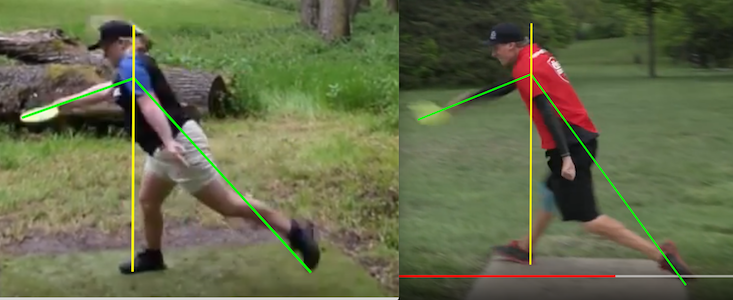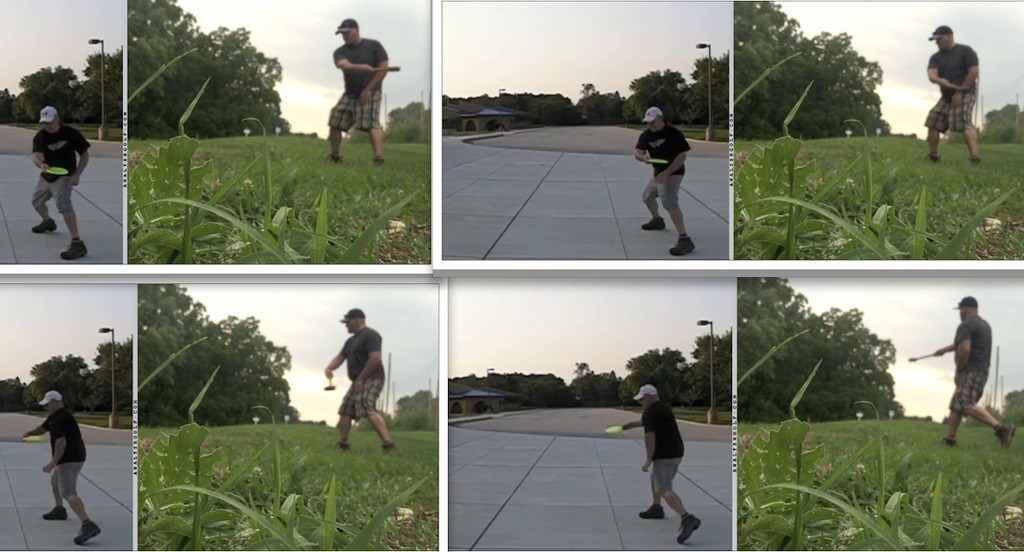Have you ever heard anyone actually describe it? Seen it written down in any way other than something circular that just ends being "the hit is the process of getting to the hit and then you experience the hit." I haven't.
I've done hammer swings, etc. It seems to do the opposite of what it's supposed to. It's like being on the other end of Tim Robbins in the Hudsucker Proxy when he draws a circle and says "You know, for kids!" ISTM that this is sort of the default view and even people who "get it" regard it as mysterious, requiring some light bulb moment.
LOL
I think the circle is that the focus on a "hit" and "snap" as some singular magical thing is itself part of the problem. Focus on the swing.
IMO understanding that it is a swing and knowing the similarities and differences in the swing thoughts I wrote below that are shared across sports motions get you out of the circle. Connecting this insight with our actions helps get our overeducated reptile brains moving freely instead of overanalyzing like adults always tend to do. The main problems in DG are that you're swinging a light disc and not a club, and you're typically swinging forward and back more horizontally overall (the gravity advantage can be harder to find than some sports at first). And unfortunately lots of people have trouble developing high-level swings in other sports even when they start as kids.
If you swing a hammer at a nail, you hit it. Your swing heading into the hit can suck to some degree. Don't swing at the head. Swing through it.
If you swing a bat at a ball, you hit it. Your swing heading into the hit can suck to some degree. Don't swing at the ball. Swing through it.
If you swing a golf club at a ball, you hit it. Your swing heading into the hit suck to some degree. Don't swing at the ball. Swing through it.
If you swing a fist at a punching bag, you hit it. Your swing can suck to some degree. Don't swing at the bag. Swing through it.
If you slash a blade through a melon, you hit and cut through it. Your swing can suck to some degree. Don't swing at the melon. Swing through it.
If you swing a ball to throw it, you swing through the motion. Your swing can suck to some degree. Don't swing at the release point. Swing through it.
If you swing a disc to throw it, you swing through the motion. Your swing can suck to some degree. Don't swing at the release point. Swing through it.
The main difference between the last two and all the others is that the impact and recoil are out in front of you in space rather than in contact with a firm physical object.
Good swing mechanics cause better hits. All good swing mechanics involve swinging through the contact or release point. Swinging and slashing through while braced and learning how to put leverage
among parts of your body makes it easier to get a good hit and snap.
It's all connected, and good hits are caused by good mechanics swinging through the target (or release or ejection point).
I sympathize that it can be maddeningly hard to get it on a disc, but improving swing mechanics always helps. I am still not good at swinging hammers, but learning to swing hammers better helps because it's learning the leverage game swinging through the target - it's not always about the hammer or "hit" itself as much as teaching my whole body to move and swing my arm and disc. And I certainly wouldn't get better as fast without SW22 because he specializes in teaching the method and I appear to have a similar taste for the mechanics and also like swinging and actually hitting things. A big problem for me is that it was never to eject an object. And yes, it's a little hard to find a "hit" point out in front of you when there's nothing to literally hit out there. Hitting walls in posture helps and that's why one leg throws are awesome, but doing it dynamically with more of the body is super hard to learn.
I think there are other ways to learn to swing the disc through the hit, but the point is you need to get the sequence and kinetics and leverage etc. working in a clean system like a golf swing. Swing the disc in front of you through the release.
sw22 said recently I was straightening my back leg into the plant and sent me to a video on the bow and arrow drill where what I see is that … he straightens his back leg into the plant. So I just end up mystified about what exactly I'm missing. I tend to do better when I can sort of reiterate what I'm not getting until someone can figure out how to communicate so I can hear it. And being put into the position definitely helps. But that's a conversation, not a disjointed series of form reviews.
I agree that this is part of what's hard about doing it remotely. It's incredibly easy for the person learning vs. teaching to focus on different things. E.g., the more I understand the swing mechanics the easier it gets for me to understand what SW22 meant at the time and why he said it even if I can't do it well. Sometimes I just don't understand unless I'm told explicitly. Much of the time I just need to do it a bunch and stop thinking about it, get feedback when I'm doing it work, etc. I don't know that I have a great solution other than to say mileage varies and online is hard :-\
As to facebook, that's how I got to the local pro. The recommendation for coaching from the local disc golf group was two specific pros, one of whom is full time on DGPT so wasn't actually available. Maybe he would be a better fit for me, but maybe not. IDK, maybe there are more people now.
Tough. I also am curious to know how good the average pro instructor is. A lot of them are young athletic people who had advantages over us later learners and may have trouble getting through to us.
And as SW22 told me this week - free yourself up and just get swinging. Swinging stuff around and feeling your weight moving is a big part of learning to reign it in and swing the disc. I hope part of being 52 can be the joy to just let go and swing stuff like a crazy person for fun. It should not be restricted to children.
Swing the disc in front of you through the release.

